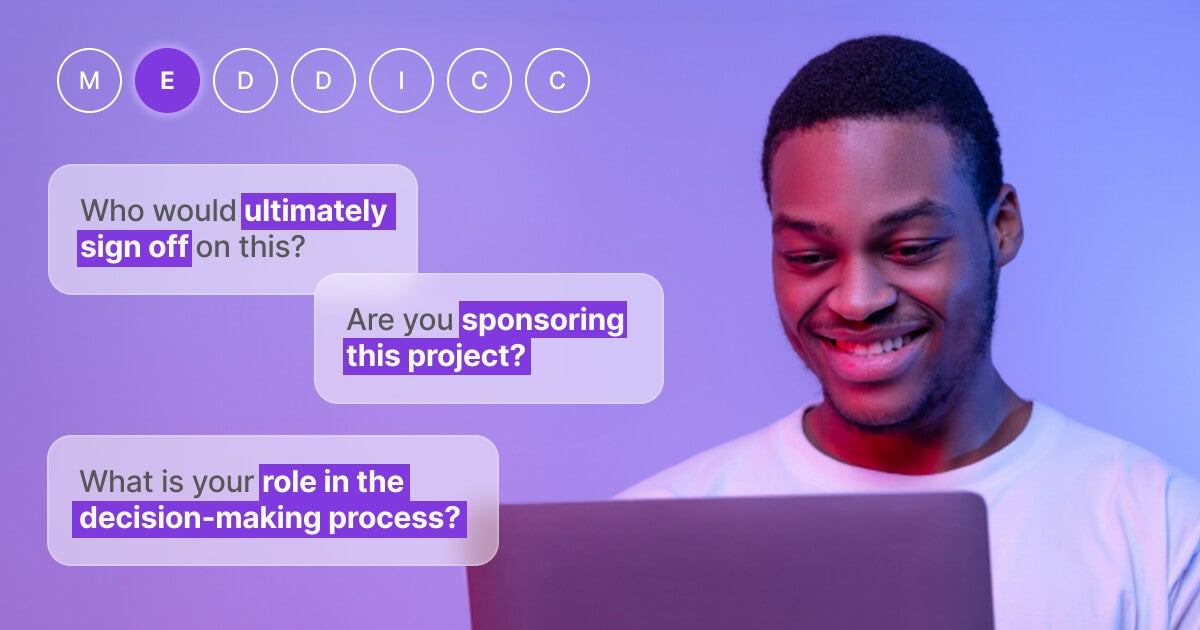Navigating complex sales: Advanced strategies for sticking the landing
Enterprise sales are a different beast than small to medium-sized business (SMB) transactions. They involve more decision-makers and have larger values.
A strong sales process is crucial to navigate these deals successfully.
But how do you handle multiple decision-makers? How do you maintain deal momentum and keep large deals from “slipping”?
Keep reading to find these answers and more. In this article, we’ll explain complex sales and how they differ from traditional sales. We’ll also describe each stage of the complex sales cycle and provide actionable insights for them.
What is a complex sale?
A complex or enterprise sale is a high-value deal that involves multiple decision-makers and a lengthy process. There’s no exact dollar figure, but these deals can easily reach six figures or more.
While complex sales are common in B2B sales environments, a B2C transaction can also be “complex.” Home buying is a good example — it’s a large transaction with a lengthy deliberation. B2C transactions also require approval from multiple decision-makers (agents, lenders, family members, etc.) before closing.
What are the key elements of a complex sales process?
Whether a B2B or B2C transaction, a complex sale involves more decision-makers, has longer sales cycles, and has higher perceived risks than a traditional sale.
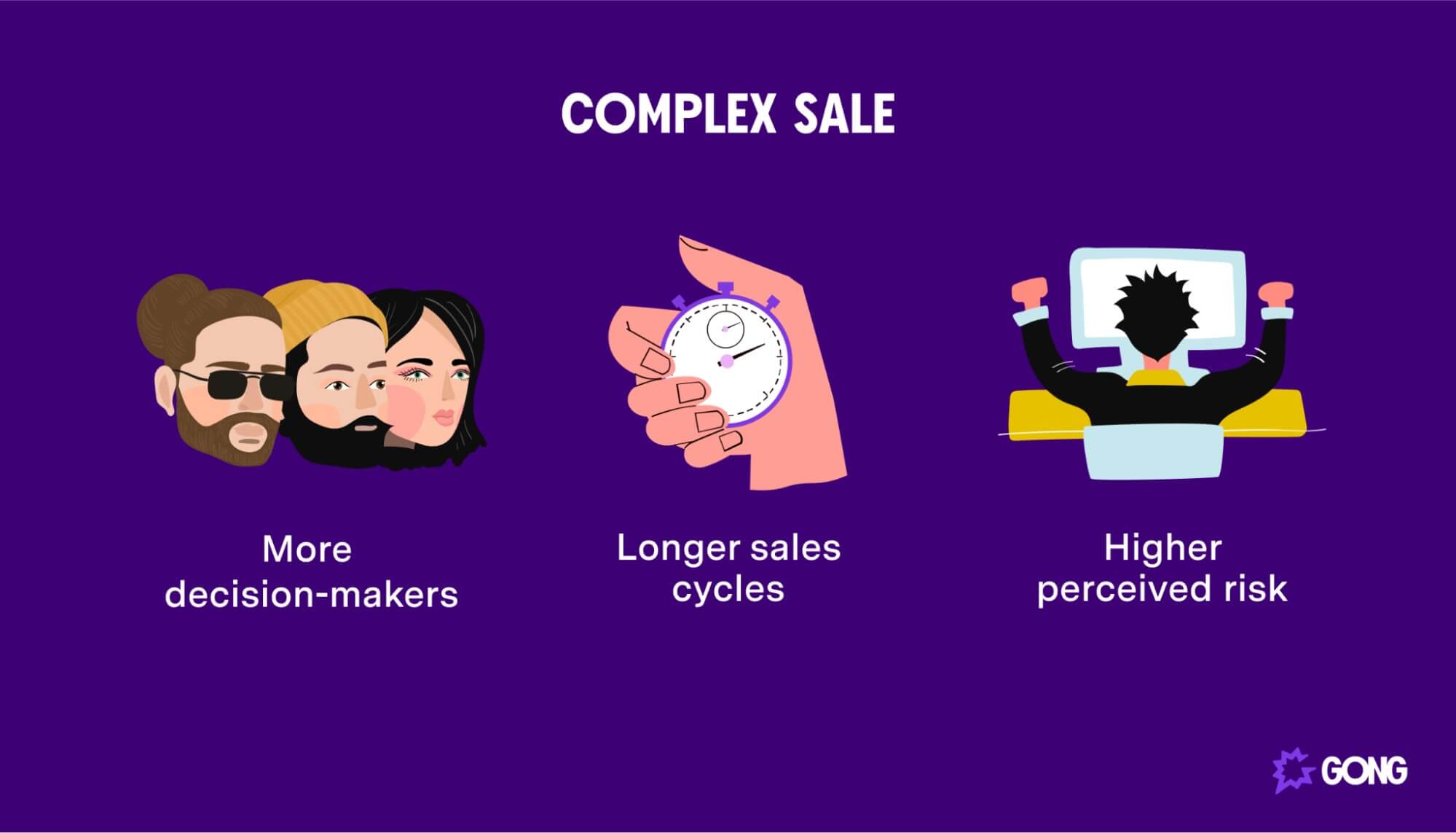
Let’s take a closer look at each of these.
More decision-makers are involved
One of the main distinctions of a complex sale is you have to convince multiple stakeholders. The number of decision-makers involved and their positions can vary.
If you’re a software company selling accounting solutions, for instance, you’ll likely need to get approval from the company’s accounting manager and chief financial officer (CFO). The chief technology officer (CTO) may also get involved to ensure that the sale integrates with the company’s infrastructure.
When multiple decision-makers are involved, your sales team must align multiple viewpoints and focus on the right messages to win them over.
Average sales cycles are longer
Complex sales have longer average sales cycles. One reason for this is that there are more decision-makers involved.
Even if you get approval from one decision-maker, you haven’t closed the deal yet — Finance will need to approve the cost, IT will need to check the deal’s security (which is common for software products), and Management will need to see how the sale will fit with their workflow.
Of course, your buyers are likely considering other solutions as well.
So how long does a complex sale take? A complex sale can take anywhere from six months to well over a year, depending on the type of sale.
Higher perceived risk for the buyer
Finally, because complex sales have higher price points, there’s a high degree of risk for the buyer. No company wants to make the wrong decision and spend upwards of six figures and commit to a multi-year engagement on something that doesn’t meet their needs.
Sales reps can reduce perceived risk by ensuring transparency, providing value, and educating buyers throughout the selling process.
The 5 stages of a complex sales cycle
In many ways, a complex sale isn’t much different from a typical transactional sale. It encompasses five stages: Discovery, Qualification, Proposal, Closing, and Delivery.
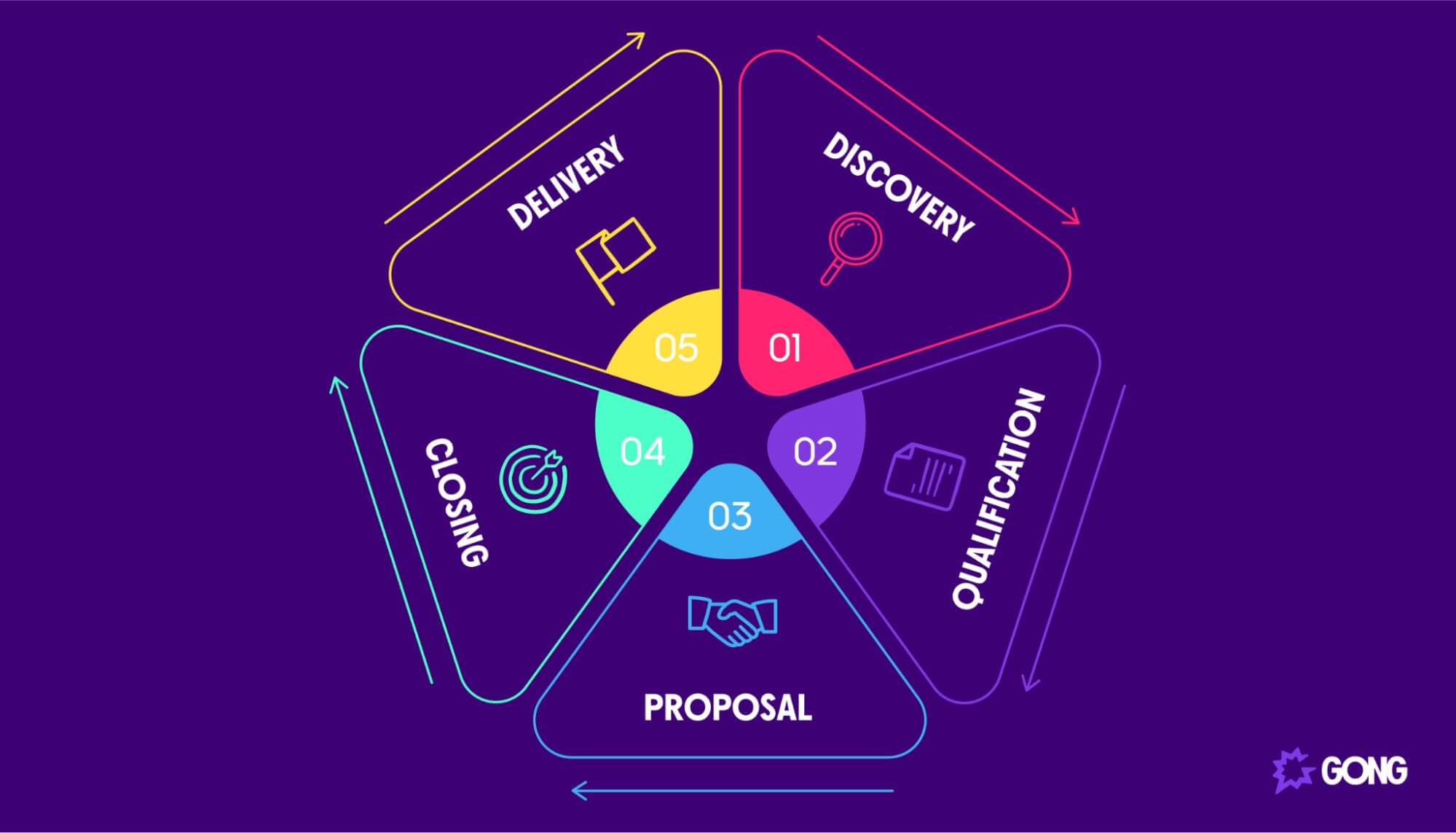
Let’s break down each stage and look at how you can help your sales reps thrive with high-stakes sales.
1. Discovery
The discovery stage is perhaps the most important in a complex sale. It sets the tone for the entire relationship, so getting it right is key to increasing your win rates.
Before you jump on a discovery call, you’ll need to do some research. The more you learn about your prospects, the more “ammo” you’ll have throughout the sales process.
Fortunately, LinkedIn makes the discovery process easier. Premium Insights (which are only available on a paid plan) allow you to gather information like:
- Employee counts
- Employee distribution by function
- Notable alumni
- Total job openings
Learning how a company is growing can help you determine what solutions they need.
In the example above, it looks like the sales team for this company is growing fast. This would be a perfect opportunity for our reps to learn more about them.
Don’t stop at LinkedIn, though.
Research your prospect’s company on other channels, like Facebook and Twitter. And be sure to research the person that you want to engage with.
Of course, research can only take you so far. The next step is to get on a discovery call. The goal here is to understand the challenges that your prospects are facing. This will help you make your message more impactful.
Get the best discovery call tips here — learn how many questions you should ask per call, how to prompt longer responses, the ideal talk-to-listen ratio, and more.
2. Qualification
Sales qualification is the next stage of the complex sales cycle. It involves determining whether a prospect is a good fit for your products or services.
Use a qualification framework like BANT to qualify a prospect. BANT is an acronym that stands for:
- Budget: Does your prospect have the budget to buy your solution?
- Authority: Who has the final voice to authorize the purchase?
- Needs: What pain points does your solution solve?
- Timeline: When is your prospect looking to buy?
A prospect is considered qualified if they meet at least three criteria.
Another valuable tool for helping with the qualification process is an ideal customer profile (ICP) — a description of the company that would benefit most from your solution.
Here’s an example of an ICP that includes details like industry, revenue, and employee count:
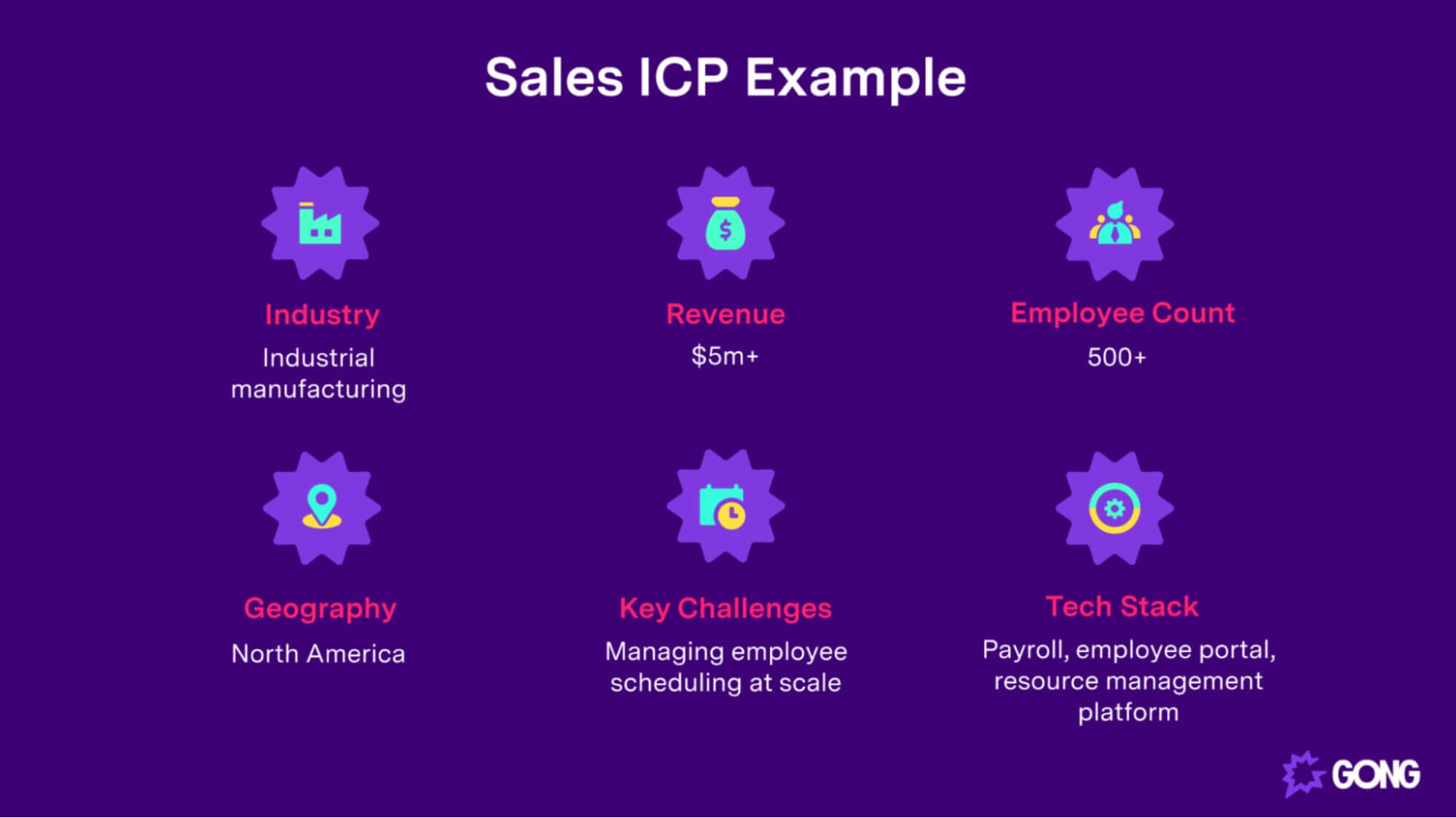
Even if a prospect doesn’t meet your ICP criteria, don’t jump the gun too soon. Continue to engage the prospect and send relevant content their way.
Finally, don’t be afraid to discuss budgets early on. We have found that win rates are 10% higher when sales reps discuss pricing on the first call.
Use these 43 Ultra-Specific Sales Qualifying Questions to qualify your prospects.
3. Proposal
The proposal stage is where you’ll present your offer and describe how it will help prospects address their pain points. How you deliver your pitch is key here. Describing feature after feature isn’t enough to engage your prospects.
So what should you do instead?
Focus on value-based topics — things like business impact and use cases. We’ve found that discussions around value drive the next steps more than features.
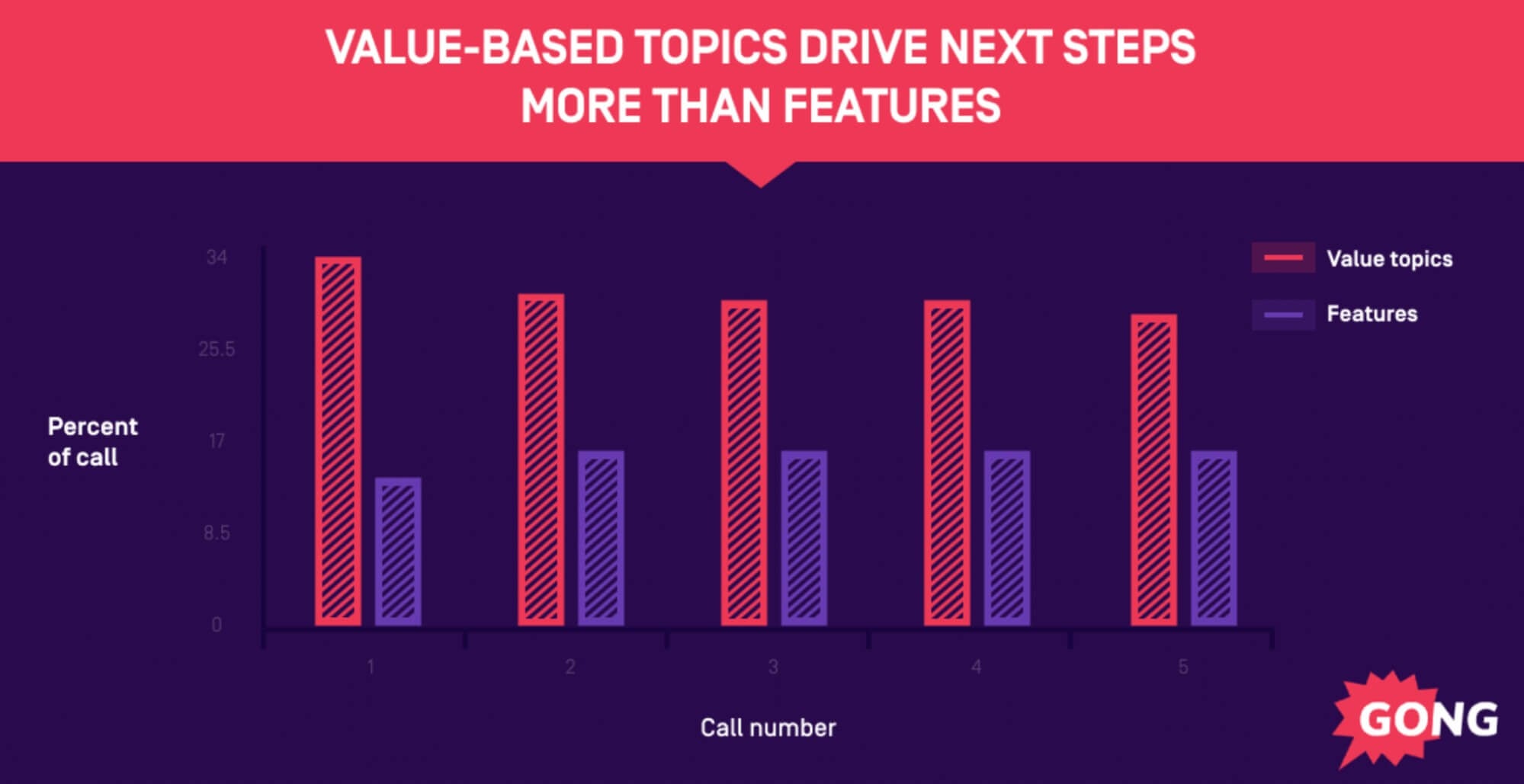
Complex sales typically involve multiple decision-makers. Be sure to tailor your proposal based on who you’re talking to and how your solution can solve their problems (e.g., a sales executive will want to know how a sales tool can make their reps more productive).
Of course, higher perceived risks are another important consideration.
Buyers won’t just take your claims at face value. Supplement your proposals with case studies and detailed examples of how your solution helped other businesses to lower their perceived risks.
Get our Ultimate Sales Proposal Template and learn how to create a winning proposal.
4. Closing
The closing stage is the moment right before the finish line. Don’t celebrate just yet, though — you’ll still need to seal the deal (and, in some cases, get a contract signed).
If your sales reps have done their homework and communicated the value of your solution well, closing should happen naturally. But don’t expect prospects to close themselves. Sometimes, prospects need an extra push to keep deals moving.
Ask these sales closing questions to maintain deal momentum:
- When can we execute an agreement by?
- Has anything changed since the last time we spoke?
- What needs to happen next to get [the decision-maker] to say yes?
If prospects ask more questions about whether they’re making the right decision, you’re on the right track. We have found that prospects ask more questions during successful closing calls than during unsuccessful calls.
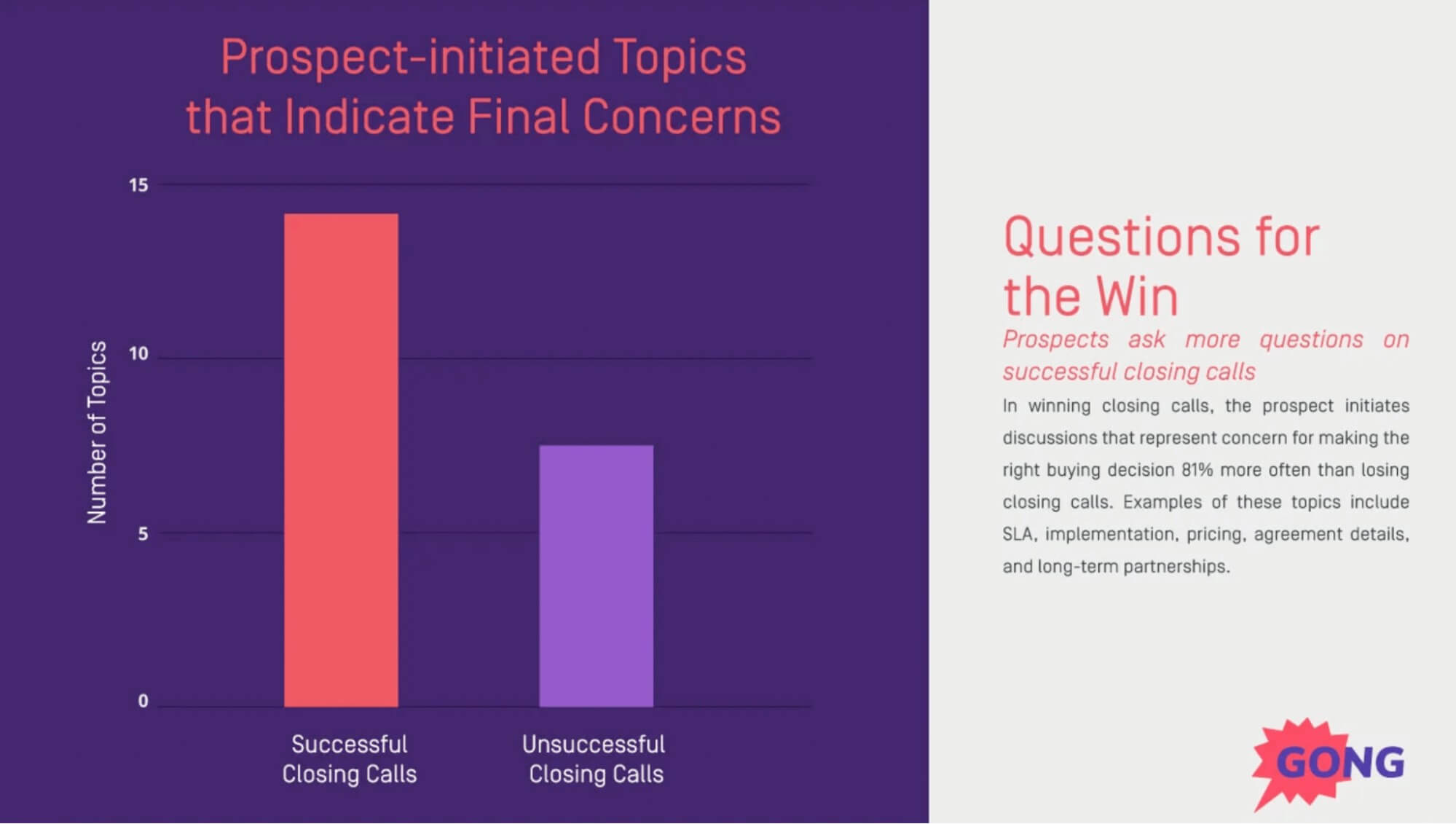
Pay attention to cues like implementation concerns, pricing, and other agreement details. Make sure that your reps are prepared to answer these types of questions.
Get our Data-Backed Guide for Closing Complex 6-Figure Deals and win bigger deals.
5. Delivery
The last stage of the complex sales cycle is delivery.
What this looks like will depend on the type of sale and what both parties agreed to. It could be as straightforward as preparing and shipping goods like office equipment. Or it could be as complex as building and implementing custom software.
In most cases, however, an account or customer success manager will take over the account and provide post-support to ensure that buyers are getting value from your solution.
Close more complex sales with Gong
Complex sales aren’t like typical transactions. They have more decision-makers involved, longer sales cycles, and higher perceived risks.
However, what sets these deals apart is that there’s more at stake. We’re talking about deals worth tens or hundreds of thousands of dollars.
There’s a lot on the line with complex sales, which is why you want to ensure your reps have the tools they need to close these deals.
Gong is a sales enablement tool that captures and analyzes buyer-facing interactions. It helps your reps gain data-backed insights into their sales pipeline and keep deals moving in the right direction.
Request a demo today to see how Gong can help you close more complex sales and drive more revenue.
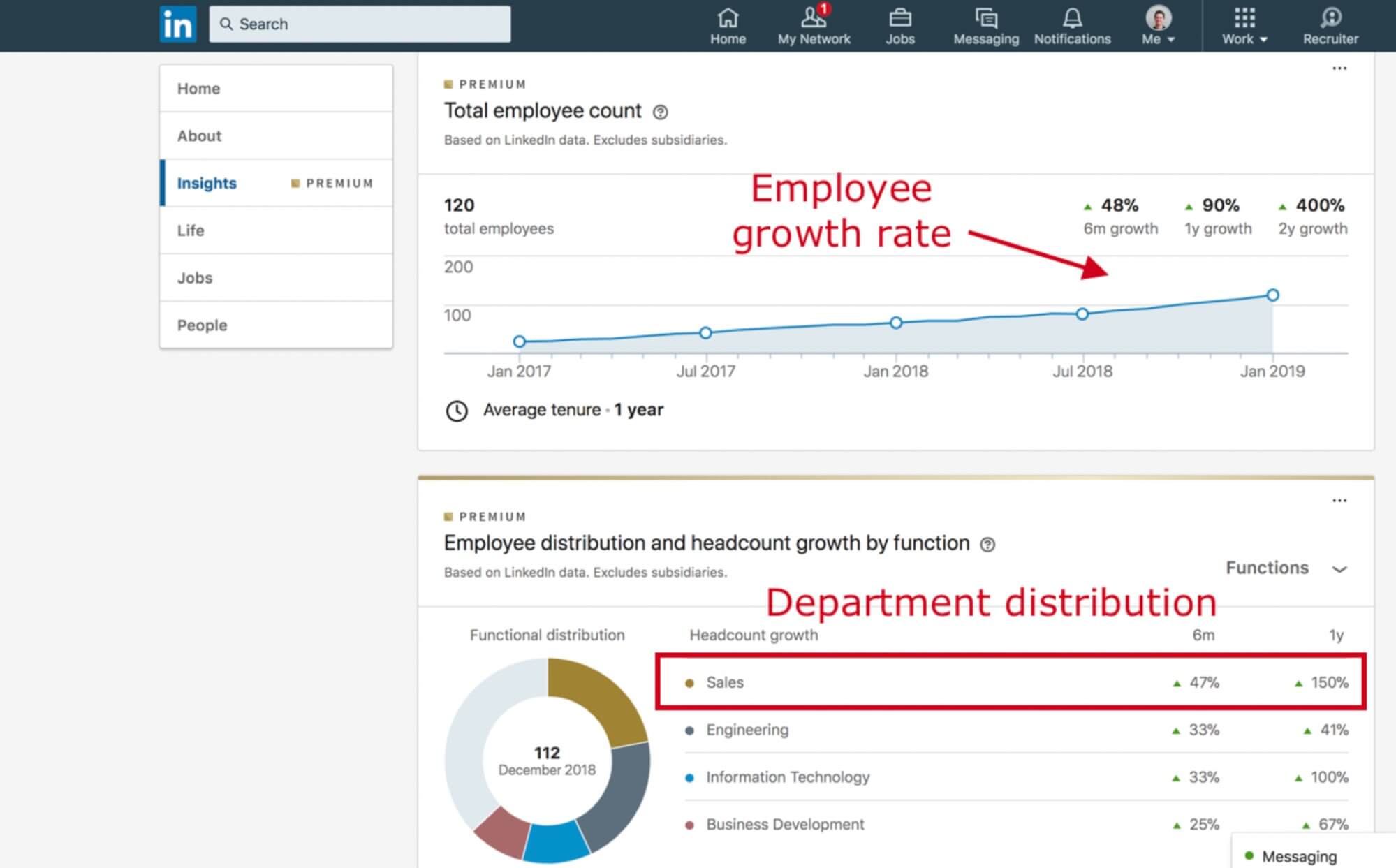 (
(